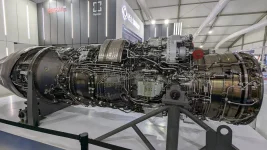- Views: 3K
- Replies: 14
India's indigenous fifth-generation Advanced Medium Combat Aircraft (AMCA) program is making significant headway, signaling a major step forward for the Indian Air Force's (IAF) modernization efforts.
According to industry sources, the ambitious project, aimed at developing a stealth-capable fighter with advanced avionics, is progressing steadily, with key components nearing completion.
A crucial milestone has been reached with the ongoing construction of substantial portions of the AMCA's airframe. This critical structural element, which will support the aircraft's various systems, is taking shape, bringing the AMCA closer to its physical realization.
The airframe is being developed by the Defence Research and Development Organisation (DRDO) in collaboration with private sector industries, highlighting India's push for self-reliance in defence manufacturing.
Further bolstering the program's progress is the near completion of the AMCA's radar system. This advanced sensor, along with the aircraft's completed radome and canopy, will be integral to its stealth and combat capabilities.
The radar is likely a domestically developed Active Electronically Scanned Array (AESA) system, potentially based on the Uttam AESA radar currently under development for other Indian fighter jets. AESA radars provide superior target detection, tracking, and electronic warfare capabilities compared to older mechanically scanned arrays.
The AMCA is being designed as a twin-engine, single-seat aircraft with a focus on stealth features, including an internal weapons bay and specialized shaping to minimize radar cross-section.
It is intended to fill a critical role within the IAF, complementing existing fighters like the Su-30MKI and the Rafale while providing a technological leap into the realm of fifth-generation combat aircraft. It is being developed to perform a multitude of missions, including air superiority, ground attack, and electronic warfare.
As per the latest updates, the rollout of the AMCA is targeted for mid-2026. This significant event will be followed by the anticipated first flight, currently projected for the second quarter of 2028. The development timeline of the AMCA is an extended one and that can be seen with similar 5th generation fighter jet developments all over the world, with the US F-35 program taking close to 15 years from the start to its first flight.
While the AMCA's maiden flight is still a few years away, the steady progress of the program offers a promising outlook for the future of India's air power. With major components nearing completion and a clear timeline established for the rollout and first flight, the AMCA is poised to become a cornerstone of the IAF's modernization drive in the coming decades, significantly enhancing India's defence capabilities and projecting its growing technological prowess on the global stage.





